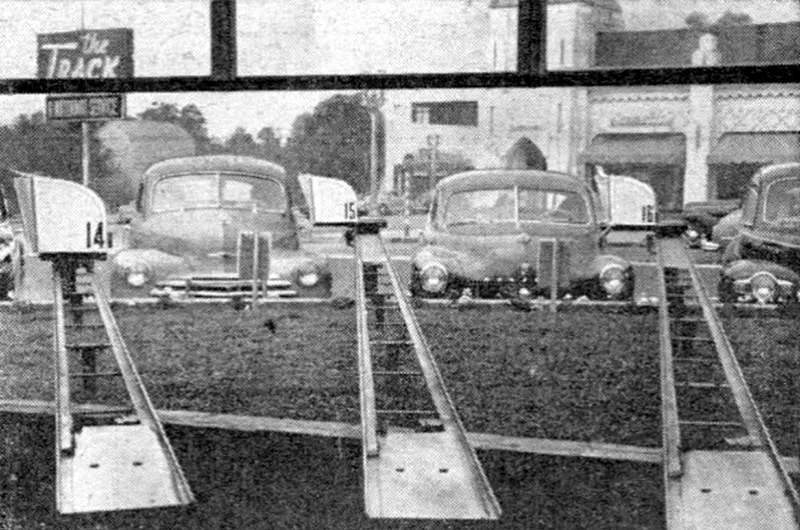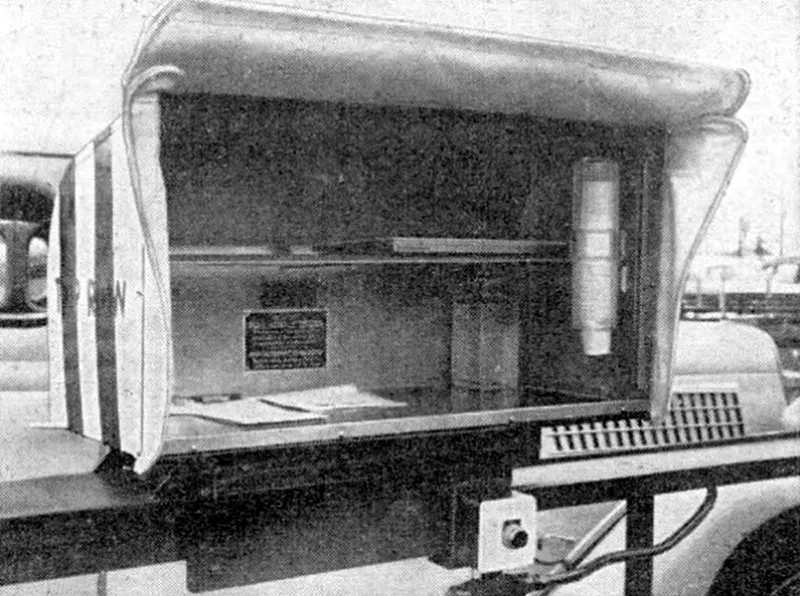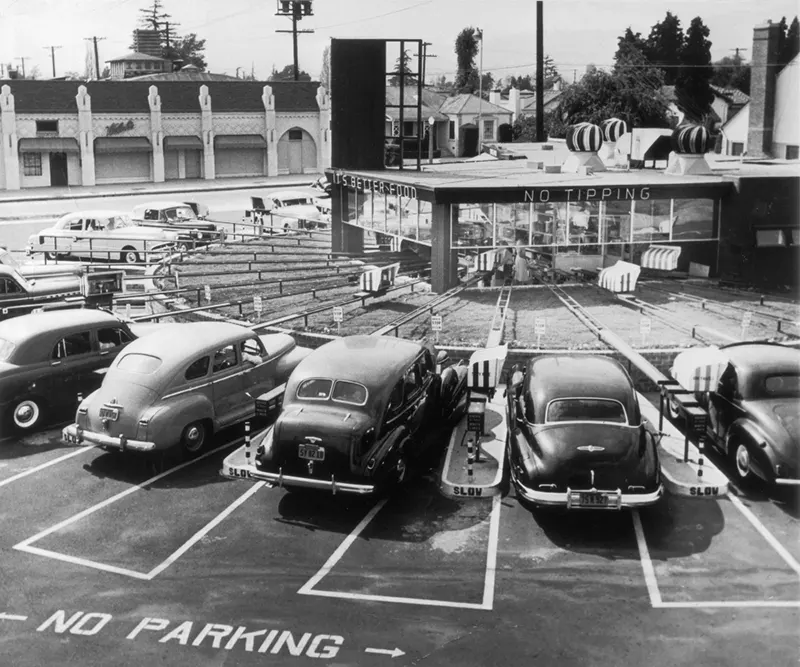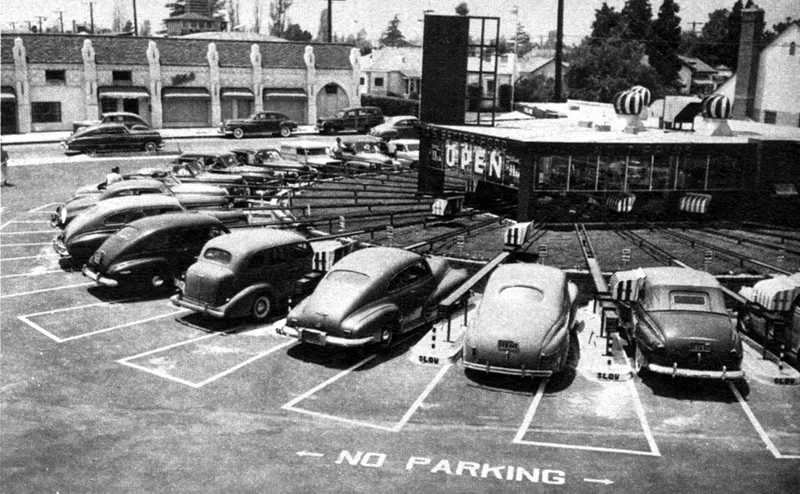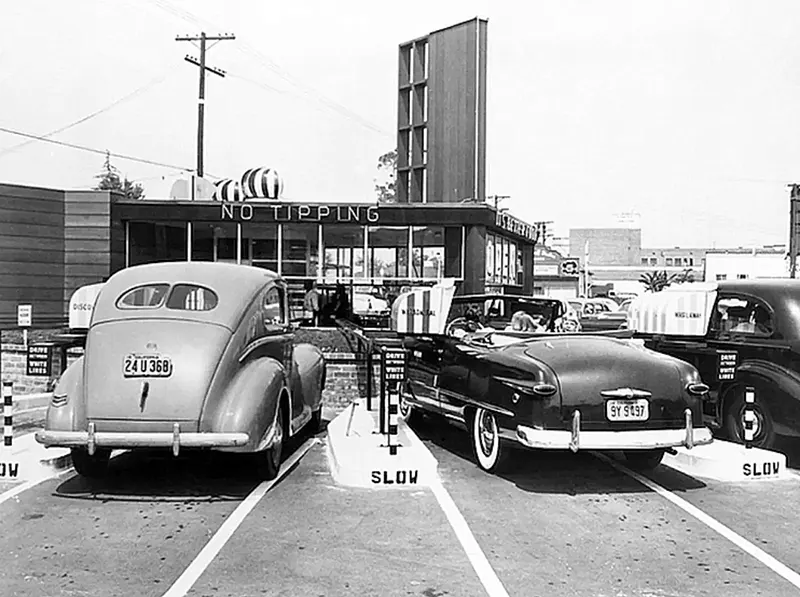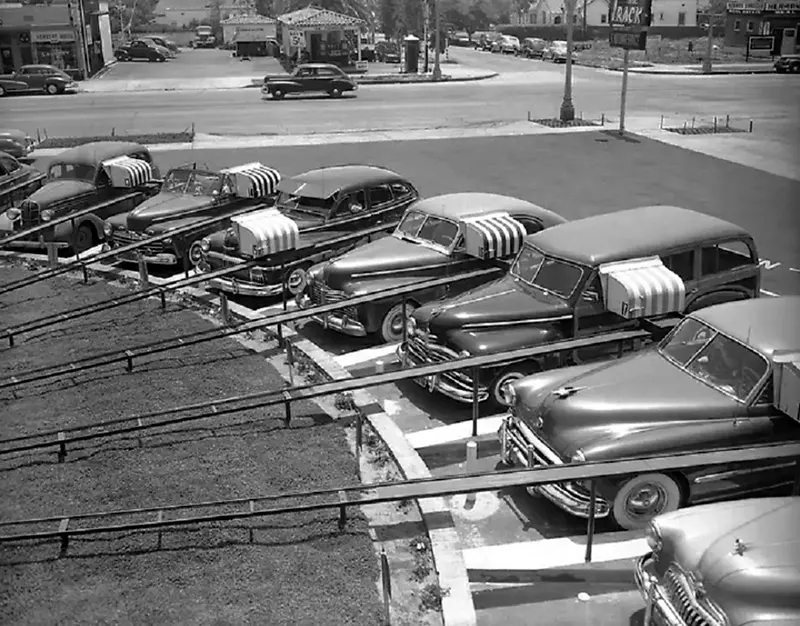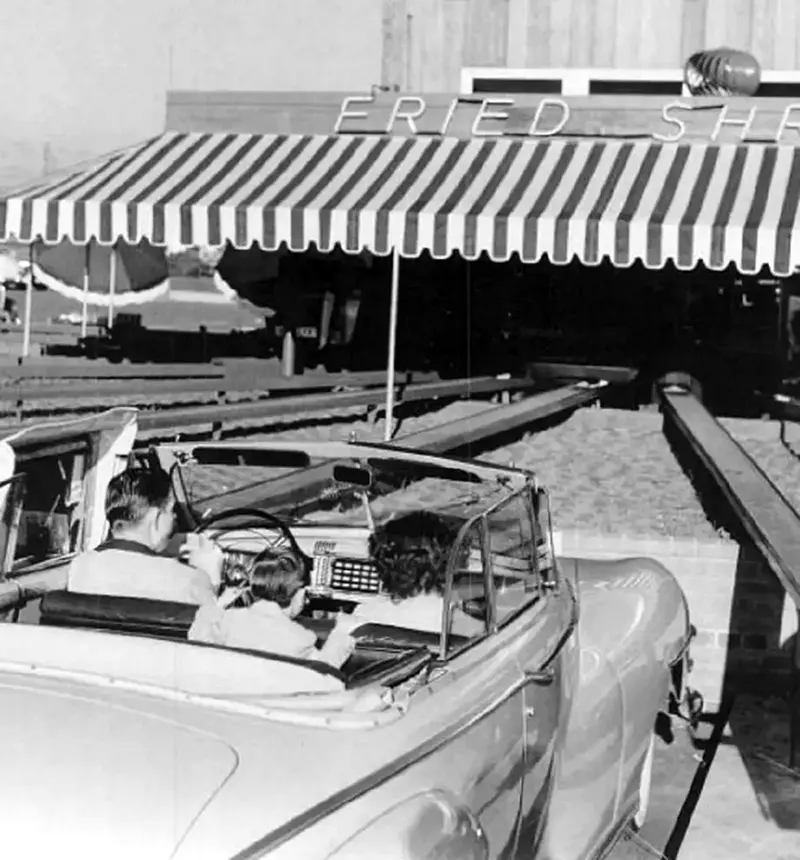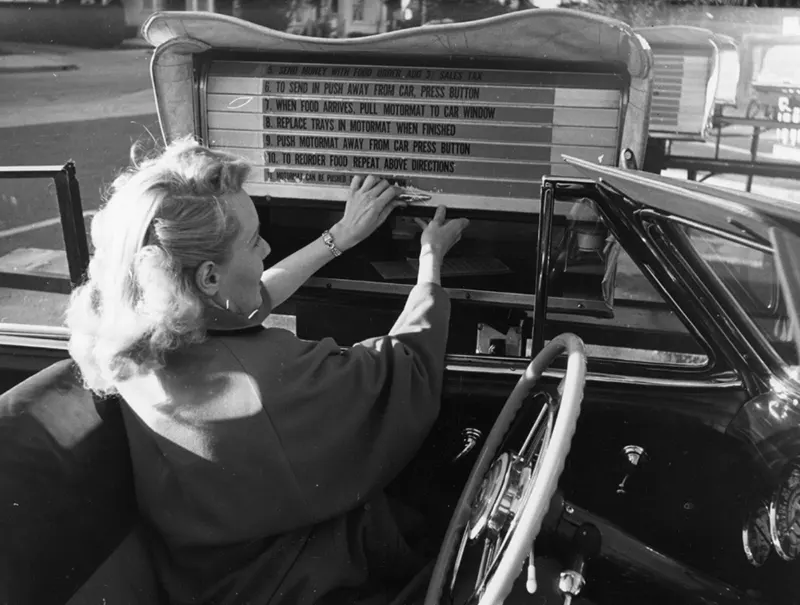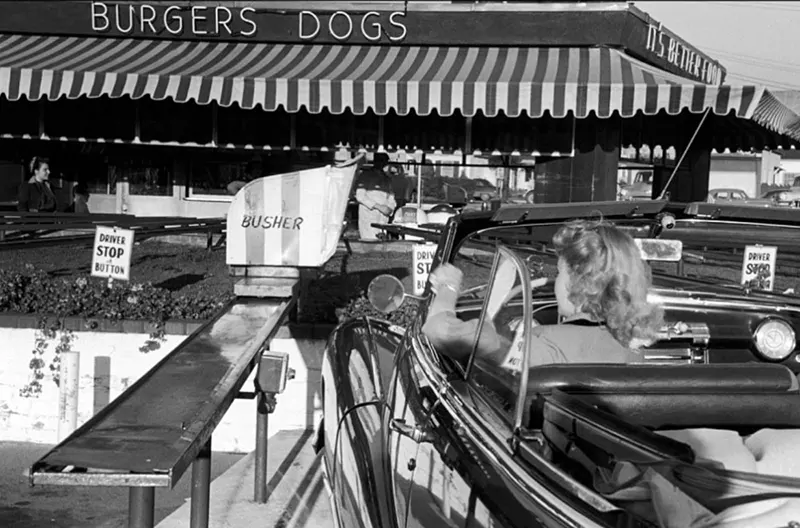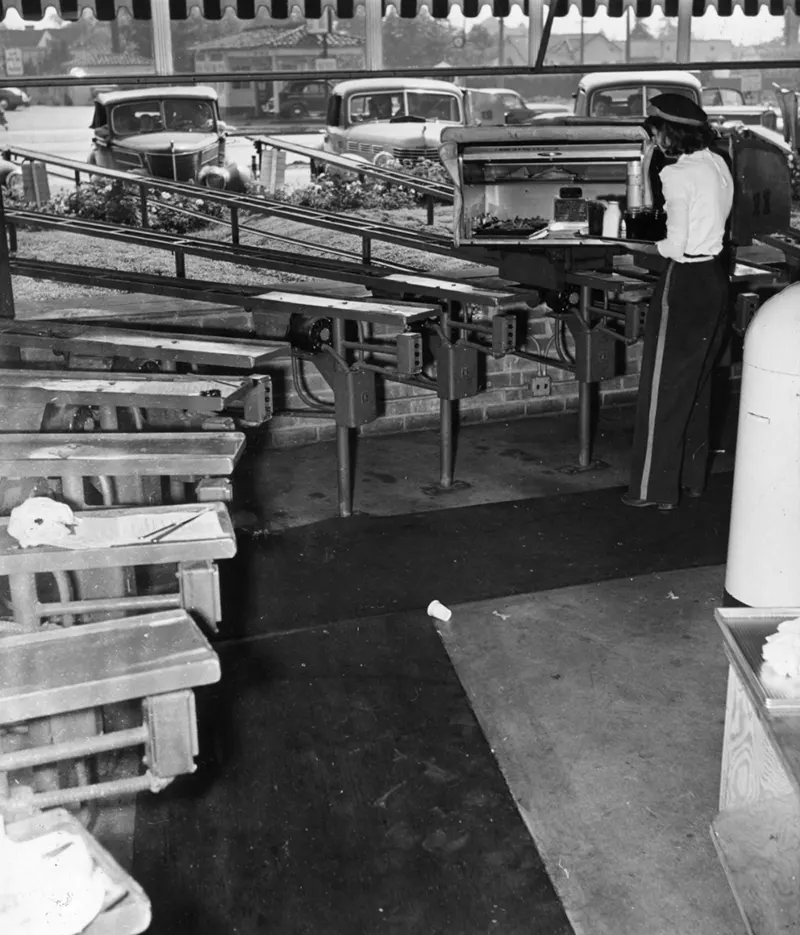As the United States basked in the post-war boom of the 1950s, a cultural phenomenon took the country by storm: the drive-in craze. Amidst this automotive renaissance, an innovative dining concept emerged, promising a seamless fusion of technology and convenience. This was the “Motormat,” a brainchild of Kenneth C. Purdy, which redefined the drive-in experience by integrating a unique conveyor belt system that catered to a nation increasingly on-the-go.
Inception of the ‘Motormat’ Concept
In 1948, recognizing the Americans’ burgeoning affair with automobiles, Kenneth C. Purdy introduced the Motormat, a patented system designed to expedite the drive-in dining process. Unlike traditional drive-ins, the Motormat eliminated the need for carhops. Instead, it employed a mechanical marvel: a conveyor belt system that handled orders and delivered food, dramatically cutting down service time by an impressive 30 to 50%.
Southern California’s Track restaurant was among the early adopters of Purdy’s futuristic design. With a circular layout featuring 20 stalls surrounding a central building, the Track became a testament to efficiency and modernization in the drive-in service industry.
The Motormat Experience: A Journey into the Future
Arriving at the Motormat, customers were greeted not by a server, but by a metal bin at window height, fixed on a set of rails and ready to take their order. Inside the bin, they found everything needed for their meal: water glasses, menus, pencils, and pads. The process was simplicity personified. Patrons wrote down their preferences, pushed a button, and the bin whisked away to the kitchen at the heart of the structure.
This system wasn’t just about ordering food; it was an experience that echoed the era’s technological optimism. As customers waited, the bin returned with their bill. Payment was handled through the same automated process, and soon, their tray of food would arrive via the conveyor, eliminating any inaccuracies or delays typically associated with human service.
Elevating the Standards of Service
The Motormat model was a response to common drive-in grievances of the time. Customers no longer had to endure long waits for carhops to take their order or deliver their food. The inconvenience of receiving food covered in dust, a frequent complaint given the outdoor nature of drive-ins, was resolved as meals arrived in closed bins. There was no awkward waiting for the check or for change, as the automated system handled transactions efficiently, reducing the usual dining duration significantly.
This revolutionary concept wasn’t just about fast service; it was about creating a self-contained dining experience that respected customers’ time and space. People could enjoy their meals at their own pace, with minimal interaction and maximum efficiency.
The Motormat was more than a quick dining option; it was a symbol of its times, representing the peak of post-war American innovation and the cultural elevation of the automobile. It catered to a society that was increasingly fast-paced and convenience-oriented, offering an experience that, while short-lived, left an indelible mark on the annals of dining culture.


